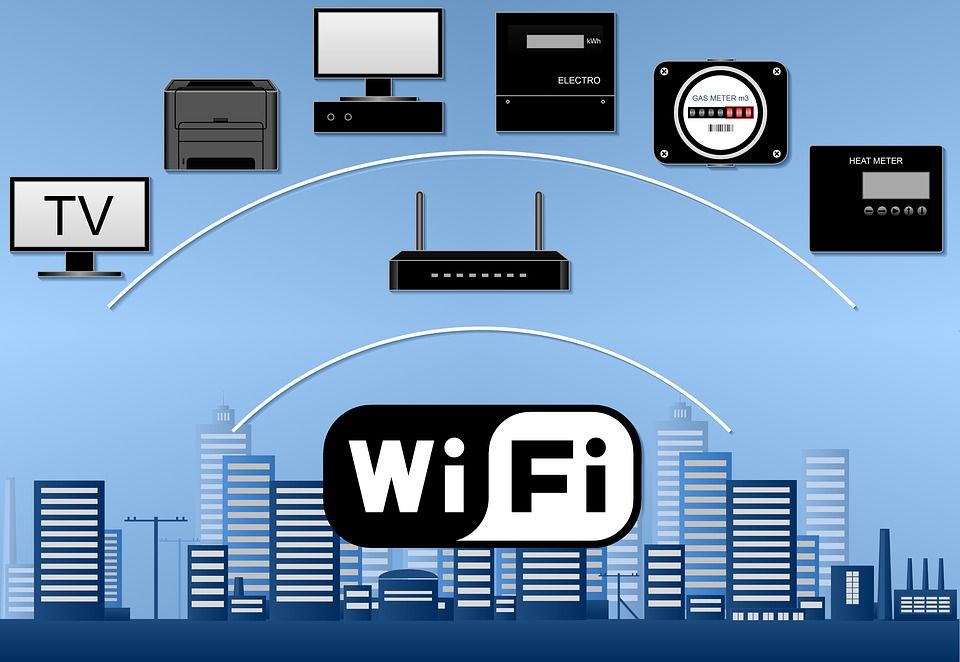Wi-Fi 7 is the next major update to the wireless networking standard. The current standard, Wi-Fi 6, debuted with several improvements over its predecessor, Wi-Fi 5, including faster speeds, more efficiency, and more data capacity.
But what is Wi-Fi 7, and what makes it stand out from Wi-Fi 6? Read on to find out.
What Is Wi-Fi 7 and How Fast Will It Be?
In short, Wi-Fi is just a wireless networking standard. Wi-Fi 7 is based on the IEEE 802.11be standard. Wireless network standards are always improved from time to time. As such, although Wi-Fi 6 is still not yet widely available, the Institute of Electrical and Electronics Engineers (IEEE) is already working on the next version, Wi-Fi 7.
Wi-Fi 7's main focus is on delivering Extremely High-Throughput (EHT), which will be instrumental for using real-time apps and services. The new standard will aid real-time applications and services related to cloud computing, gaming, virtual reality, augmented reality, the metaverse, and remote working.
The main upgrades Wi-Fi 7 brings to the table include improved data transfer speeds, less latency, and high bandwidth channels. For the uninitiated, channel bandwidth determines a Wi-Fi signal's data rate. As such, higher numbers depict faster transfer speeds.
Speaking of speeds, how fast will Wi-Fi 7 be? According to the current Wi-Fi 7 spec, the new standard will deliver a maximum data rate of approximately 46Gbps (Gigabits per second). Accordingly, that will make Wi-Fi 7 a true replacement to a wired internet connection via Ethernet cables.
According to Alan Hsu, MediaTek's corporate vice president and the general manager of its Intelligent Connectivity business, "The rollout of Wi-Fi 7 will mark the first time that Wi-Fi can be a true wireline/Ethernet replacement for super high-bandwidth applications." However, remember that the spec sheet is an early draft (the final specifications may vary). Additionally, the 46Gbps is just a theoretical maximum speed. In real life, you will not be able to achieve such speeds.
How Does Wi-Fi 7 Compare to Wi-Fi 6/6E?
To understand why Wi-Fi 7 is such a big deal, we need to compare it blow-by-blow with Wi-Fi 6 (and Wi-Fi 6E).
First, Wi-Fi 7 has a tentative theoretical data transfer speed of up to 46Gbps, while Wi-Fi 6 tops out at a theoretical maximum of just 9.6Gbps. Wi-Fi 7 also doubles Wi-Fi 6's channel bandwidth from 160MHz to 320MHz, which is important because wider channels handle more traffic.
Another key upgrade to Wi-Fi 7 is the massive jump in Quadrature Amplitude Modulation (QAM). It triples Wi-Fi 6's 1024-QAM to 4096-QAM, which implies that it can convey even more data per cycle. Wi-Fi 7 also doubles the number of spatial streams from the current eight to 16.
Again, Wi-Fi 7 specs are not yet concrete, so the details mentioned above may potentially change as the IEEE 802.11 Working Group continues to solidify the standard. As an end-user, arguably the most important upgrade to Wi-Fi 7 from Wi-Fi 6 is the increased speeds, lower latency, and the ability to connect even more devices at high speeds with fewer interruptions.
The latter is thanks to the multi-user resource unit (MRU) introduced in Wi-Fi 7. For comparison, Wi-Fi 6's orthogonal frequency division multiple access (OFDMA) allows routers to subdivide channels into smaller groups dubbed resource units (RUs). Wi-Fi 7 takes it a notch higher by introducing multi-user resource units.
When Will Wi-Fi 7 Be Available?
Wi-Fi 7 is still in the early development stages, but with all of its promising upgrades over Wi-Fi 6 and 6E, you might be wondering when it will officially be available. Well, since there's still work to do, the standard is expected to be available starting in 2023.
Of course, you will be able to see it in more devices in the succeeding years, a case that we are so familiar with already.
The Wi-Fi 7 Wireless Network Standard is Coming
Wi-Fi 7, like the previous generation of wireless network standards, delivers several improvements over its predecessor: better data throughput, wider channels, less latency, and support for more connected devices with less interference.
Furthermore, as has been the norm, Wi-Fi standards are continuously being developed. Wi-Fi 7 will be available from 2023, but that will only be the case for certain high-end devices. Wider support will certainly arrive from 2024 onwards.


